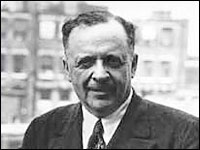Public relations (PR) is crucial to modern-day communications and marketing. It is the art of managing relationships between an organization and its public, fostering positive perceptions and reputation. Behind this influential discipline stands a pioneer, often hailed as the “Father of Public Relations.” Let’s dive deeper into the fascinating history of PR and explore the contributions of the individual credited with its invention.
Who Invented Public Relations?
Edward Bernays, Sigmund Freud’s nephew, is widely regarded as the person who invented public relations. Born in Vienna in 1891, Bernays immigrated to the United States and became a prominent figure in the field of public relations during the early 20th century. His innovative approach and profound understanding of human psychology revolutionized how organizations interacted with the public.
Bernays was not the first to engage in PR activities, but his application of psychological principles to shape public opinion and consumer behavior set him apart from his contemporaries. He believed that appealing to people’s desires, emotions, and subconscious thoughts could influence their actions, leading to a more favorable perception of a brand or idea.
Contributions of Edward Bernays:
1. The Torches of Freedom:
One of Bernays’ most famous campaigns was “The Torches of Freedom” in 1929. It involved persuading women to smoke in public, breaking the social taboos of the time. Bernays linked smoking to women’s emancipation and independence, successfully increasing tobacco sales among female consumers. This campaign exemplified his prowess in using psychology to shape public behavior.
2. Publicity Stunts and Events:
Bernays orchestrated many publicity stunts and events, attracting media attention and building brand awareness. Notable examples include promoting Ivory soap as “99 and 44/100% pure” and staging the “Light’s Golden Jubilee” to celebrate the 50th anniversary of Thomas Edison’s invention of the electric light bulb.
3. Books and Influential Works:
Bernays authored several influential books on public relations, including “Crystallizing Public Opinion” (1923) and “Propaganda” (1928). These writings laid the foundation for modern PR practices, emphasizing the importance of understanding public sentiment and shaping public opinion.
4. Collaboration with Governments:
During World War I and II, Bernays also collaborated with governments, including the United States, to shape public opinion and support various policies. His expertise in propaganda proved instrumental in building public support for war efforts.
Edward Bernays laid the groundwork for modern PR practices through his pioneering work in public relations. By leveraging psychological insights and strategic communications, he transformed how organizations interacted with the public, setting the stage for an influential and ever-evolving field.
In conclusion…
As we navigate the complexities of the modern media landscape, it is essential to acknowledge the contributions of this trailblazing figure. Bernays’ legacy lives on as public relations play a vital role in shaping public perceptions, building brand reputations, and fostering meaningful connections between organizations and their audiences.








